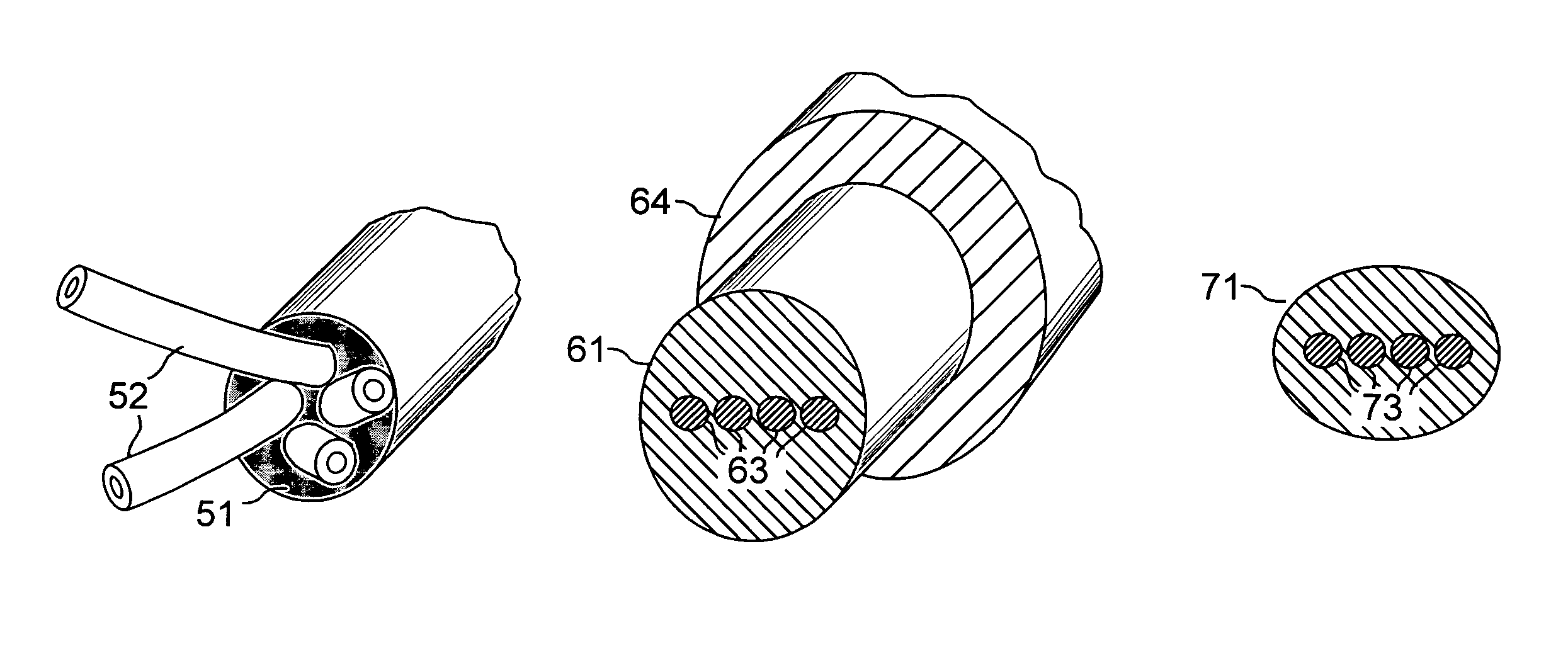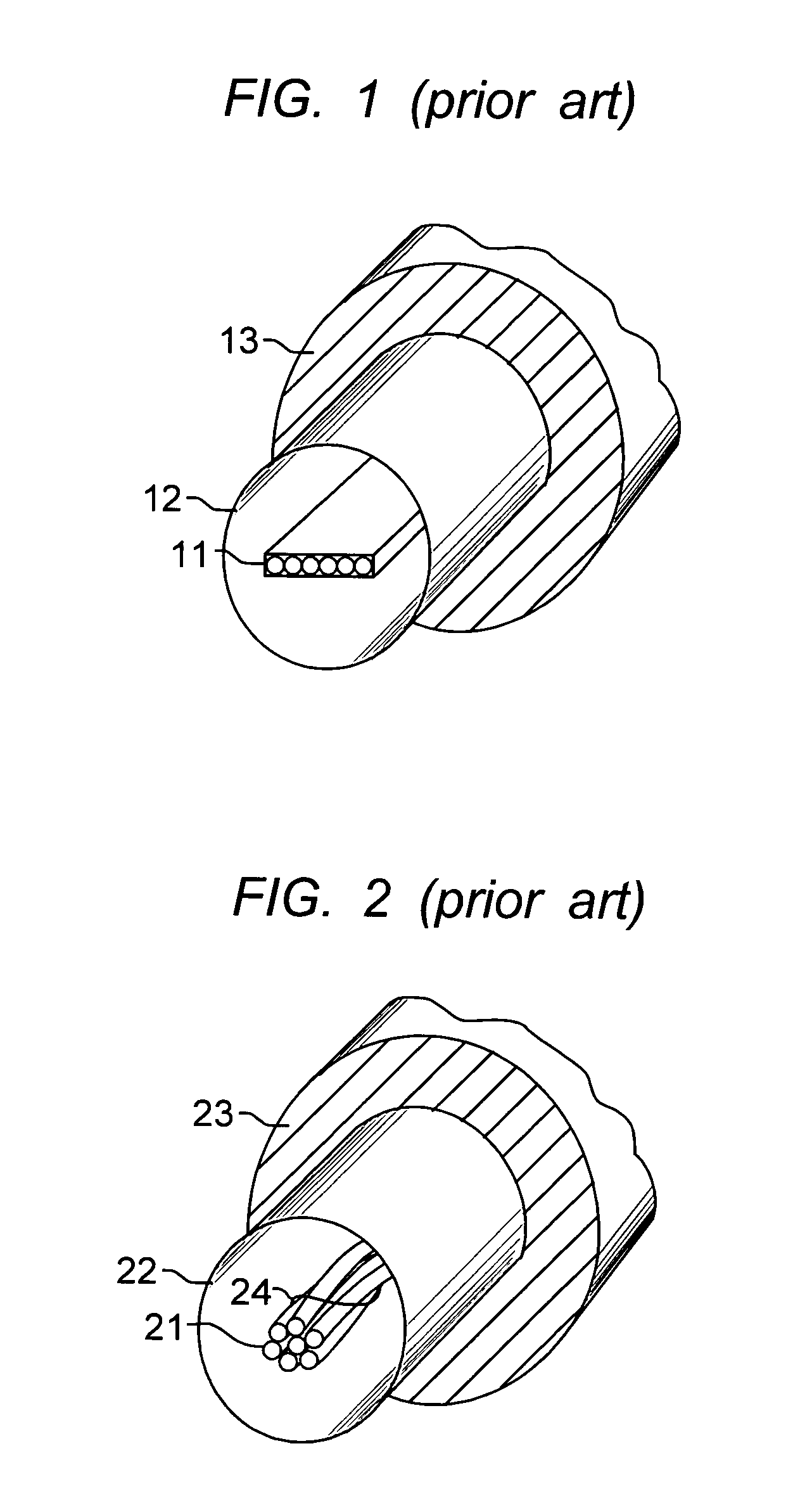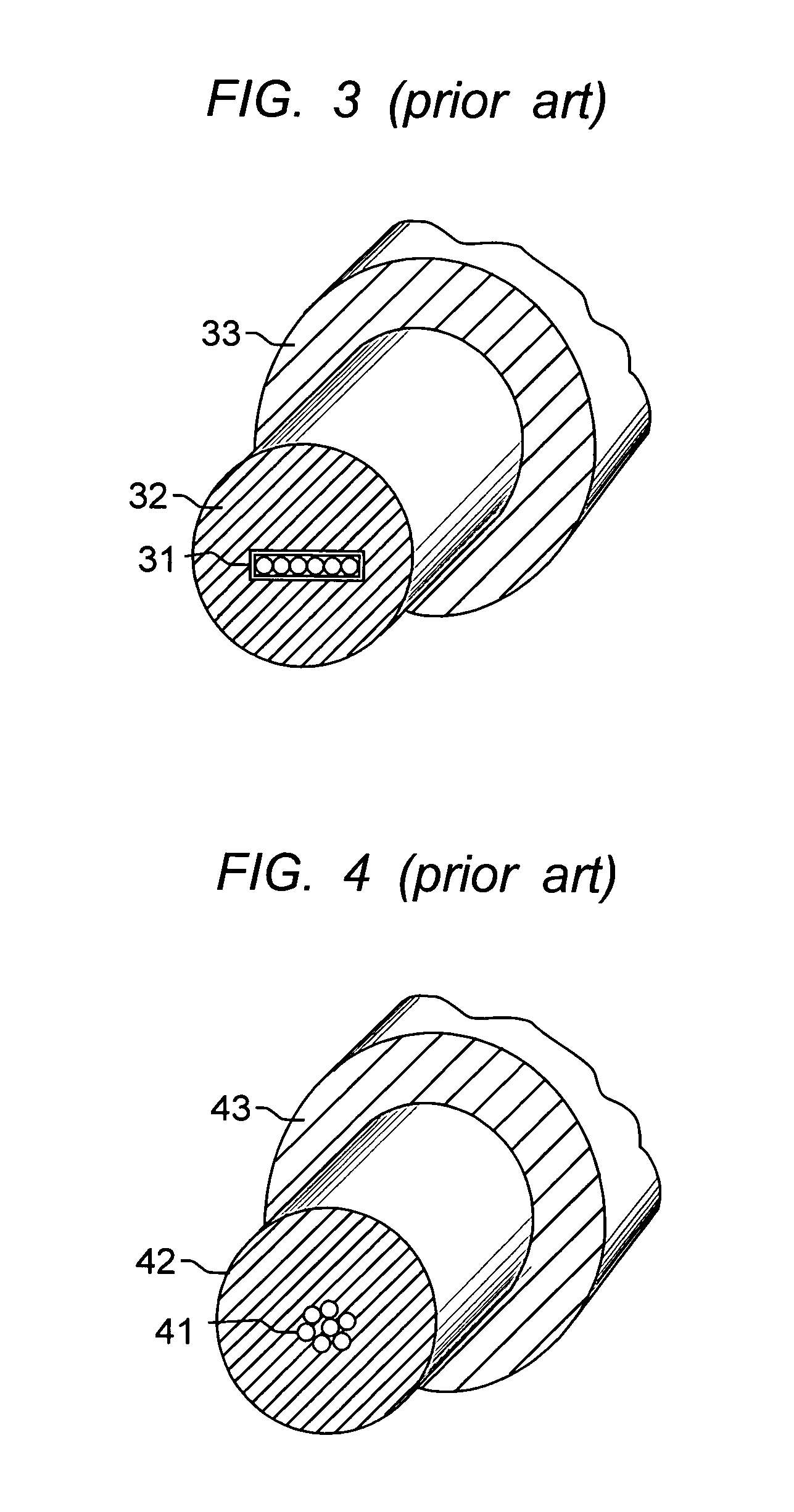Optical fiber cables
a technology of optical fiber cables and fiber optic cables, applied in the field of optical fiber cables, can solve the problems of degrading the signal transmission characteristics of degrading the optical fibers in the cable, and inefficient translation of stresses experienced by the cable to the optical fibers within the cable, so as to increase coupling, and reduce the tendency of optical fiber cables to buckle and wrinkle.
- Summary
- Abstract
- Description
- Claims
- Application Information
AI Technical Summary
Benefits of technology
Problems solved by technology
Method used
Image
Examples
Embodiment Construction
[0024]Referring to FIG. 1, an optical fiber ribbon 11 is shown encased in a cable sheath. The cable sheath comprises tube 12 and tube coating 13. In this illustration, the optical fiber ribbon has six fibers. Ribbons with four or eight fibers and more, are common and commercially available. It will be understood that these numbers are arbitrary for the purpose of illustration. For more details on the structure of optical fiber ribbons see U.S. Pat. No. 4,900,126, which is incorporated by reference herein. In the embodiment of FIG. 1, the optical fiber stack 11 is essentially completely decoupled from the sheath tube 12. This is a so-called “loose tube” assembly, which is designed to allow the optical fiber stack to “float” inside the tube. When small bends or dents occur in the tube they are minimally translated to the optical fibers.
[0025]An alternative optical fiber bundle cable design is shown in FIG. 2. The optical fiber bundle is shown at 21, the tube at 22 and tube coating at ...
PUM
 Login to View More
Login to View More Abstract
Description
Claims
Application Information
 Login to View More
Login to View More - R&D
- Intellectual Property
- Life Sciences
- Materials
- Tech Scout
- Unparalleled Data Quality
- Higher Quality Content
- 60% Fewer Hallucinations
Browse by: Latest US Patents, China's latest patents, Technical Efficacy Thesaurus, Application Domain, Technology Topic, Popular Technical Reports.
© 2025 PatSnap. All rights reserved.Legal|Privacy policy|Modern Slavery Act Transparency Statement|Sitemap|About US| Contact US: help@patsnap.com



